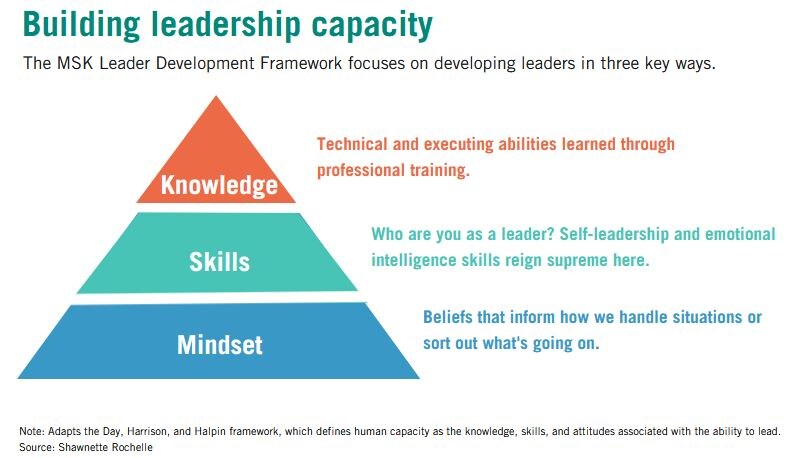
Want to build better leaders? Focus on mindset, skills, knowledge
Too many companies fail to see the potential of their best middle managers—and lose them to other firms. Hise Gibson and Shawnette Rochelle offer a framework for helping these promising leaders grow
 The foundational level of the MSK Leader Development Framework pyramid targets a leader’s mindset, in particular, the beliefs that orient the way we handle situations and sort out what is going on.
The foundational level of the MSK Leader Development Framework pyramid targets a leader’s mindset, in particular, the beliefs that orient the way we handle situations and sort out what is going on.
Image: Shutterstock
Middle management used to be the place where careers stalled, but the Covid-19 pandemic has turned that notion on its head. In fact, mid-level leaders possess more agency now than at any other time in recent history.
The tight job market is opening up new opportunities for capable middle managers who show initiative. The old saying “people don’t leave organizations; people leave people” has never been truer. Companies that don’t tangibly show that they value their best people—by developing their skills and helping them reach their full potential—will lose them, perhaps to competitors.
Unfortunately, many organizations lack a strong development culture. They view leader development as a tactical issue instead of a strategic imperative. In contrast, companies with strong development cultures invest in their middle managers, increasing their leadership capacity. These companies put leaders on the path to lean into more responsibility and more complex programs, projects, or initiatives.
What is leadership capacity?
At its root, leadership capacity is what the leader can do. Companies tend to gauge capacity based on leaders’ technical execution of tasks, but that perspective overlooks foundational elements that help these professionals reach a higher level—the T-shaped leader.
This article was provided with permission from Harvard Business School Working Knowledge.








